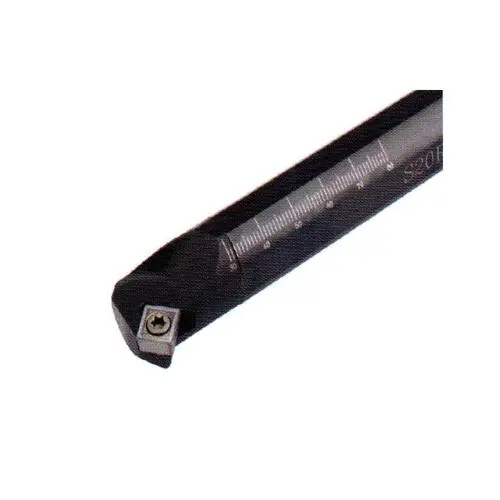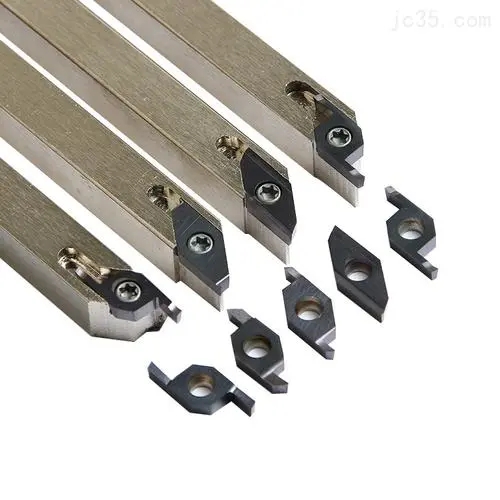What problem may HSS tools be across in precission boring inner holes?
the resultant holes that machined by HSS tools at low speed gennerally have a lower surface roughness. Additionally, the small cuttings happens and results in longer machining times and lower efficiency, making HSS tools generally suitable only for finishing operations. To eliminate taper in the inner hole, switching to medium-speed cutting can be attempted, but this often leads to built-up edge formation on the tool’s rake face, increasing surface roughness and failing to meet the required surface finish. If a HSS tool is used at high speeds for precision boring, the poor heat and wear resistance of HSS causes rapid tool wear and insufficient tool strength, leading to tool deflection and difficulty in controlling dimensions. On the other hand, using a carbide tool at high speeds can result in poor tool rigidity and significant vibration, leading to a wavy surface on the inner hole, thereby affecting precision.

How to address and tackle these technical issues in precision boring of inner holes?
Tool Design
To achieve good precision in inner hole machining, it’s essential to reasonably select the type and grade of carbide tool, appropriate geometry, and suitable cutting parameters.
1.Selection of Carbide Type and Grade
Choose a tungsten-cobalt carbide boring tool, grade YG8 (equivalent to ISO grade K20-K30). This tool features high strength, good impact and vibration resistance, and is suitable for low-speed turning, making it ideal for precision boring.
2.Tool Geometry Selection
Positive rake angle (λs) for sharpness;
Main cutting edge angle (Kr) between 93-96 degrees to reduce radial force;
Rake angle (γ0) and relief angle (α0) both at 6 degrees to improve sharpness and reduce cutting deformation;
Secondary cutting edge angle (Kr) at 6 degrees to minimize surface roughness.

3.Basis and Analysis for Boring Tool Geometry Selection
Rake angle is the angle between the main cutting edge and the base plane. A positive rake angle makes the boring tool sharp, reducing cutting resistance due to the small machining allowance during finishing.
The main cutting edge angle is the angle between the main cutting edge’s projection on the base plane and the feed direction. It directly affects the radial force. A smaller angle increases tool tip strength, while a larger angle reduces radial force. Hence, an angle of 93-96 degrees is chosen to reduce radial force and facilitate cutting of stepped surfaces in the inner hole.
The rake angle, typically 5-20 degrees, improves boring tool sharpness and reduces cutting force. However, increasing the rake angle decreases cutting edge strength. During finishing, a larger rake angle is chosen to ensure sharpness. The relief angle, between 3-12 degrees, reduces friction between the tool’s relief face and the workpiece.
The secondary cutting edge angle, 6-8 degrees (6 degrees in this case), reduces surface roughness by minimizing the angle between the secondary cutting edge’s projection and the feed direction.
4.Cutting Parameters Selection
Based on the tool characteristics, tests have determined that the cutting speedv for precision boring a carbon steel inner hole of
Φ45 is about 25m/min (workpiece speed around 180r/min), with a cutting depth a of 0.05-0.10mm and a feed rate f of 0.2mm/r.
Features of Using This Tool
Using a chip-breaking tool for inner hole precision boring ensures that the small finishing allowance doesn’t affect the surface roughness;
The larger main cutting edge angle reduces radial cutting force and vibration;
A larger boring tool holder diameter ensures sufficient rigidity, avoiding vibrations and surface waviness caused by inadequate tool rigidity.

Precautions When Using Carbide Offset Boring Tools for Precision Boring
Before precision boring, ensure a machining allowance of 0.08-0.12mm and a surface roughness around Ra3-2. If the allowance is too small, finishing won’t remove rough machining marks; if too large, cutting resistance increases, reducing hole precision.
The tool is only suitable for finishing, not roughing.
During machining, avoid tool impact on stepped surfaces. Although carbide is hard and wear-resistant, it is brittle and not impact-resistant. Thus, operate carefully, switching to manual feed 2-3mm before the desired hole depth to achieve the required depth accurately.








